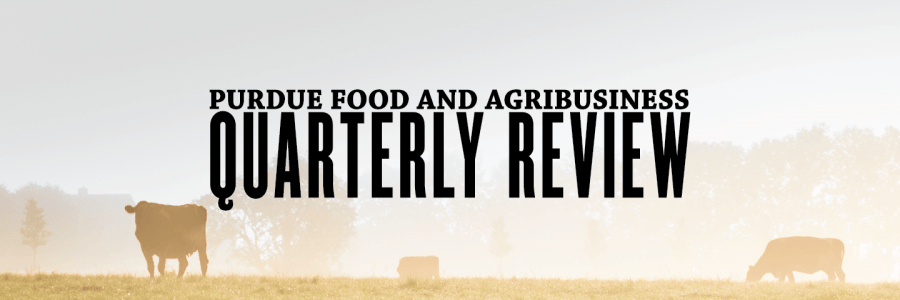Managing incentive programs
 Article
Article
Castro, L.T., Marcos Fava Neves, Jay T. Akridge. (2017) “A comparative analysis of channel incentive programs in Brazil and the USA.” International Journal of Emerging Markets. 12:2, 263-278.
Reviewer
Dr. Luciano Castro, Clinical Associate Professor
Summary
Agricultural input manufacturers have widely used incentive programs in an effort to influence dealers’ daily activities. The incentive type and intensity vary a great deal, from cash rebates to bonuses, promotional tools, and relationship programs. This paper first helps understand these programs to help managers build and manage them. It is proposed that managers should focus on four main dimensions to build incentive programs: controlling, benefits granting, exclusiveness and formalization level. The model also suggests the content of these dimensions should vary according to the power distribution among manufacturers and dealers. The paper made use of a comparison between Brazil and USA crop-protection industries in order to propose this conceptual framework. The details of this comparison bring many insights for agribusiness.
What this means for food and agribusinesses
This paper first helps the reader understand marketing channel incentive programs widely used by agricultural input manufacturers to impact dealers’ daily activities. Secondly, the framework presented should improve the programs’ manageability by suggesting the right performance measures and benefits to offer, while keeping exclusivity and formalization levels in mind based on the power distribution structure.
The four dimensions of incentive programs are control measures, benefits, exclusiveness and formalization level. Powerful manufacturers make use of input control measures trying to influence the way dealers should work. Rather than just giving extra bonuses to dealers, they also offer benefits that are more long-term oriented and are related to their own manufacturer’s agenda. They try to establish a more exclusive relationship avoiding competition inside the dealership. Finally, they formalize the relationship with agreements or enforced contracts. Less powerful manufacturers, however, will just set output goals as control measures, such as a sales target for dealers. They will compensate dealers using benefits, such as bonuses or increased rebates. High formalization levels and exclusiveness are avoided by the dealers since dealers normally rely on other equivalent manufacturers’ brands.
Power has shifted from manufacturers to retailers in general and in agribusiness this is not different. But it does not mean that sudden changes may not happen and challenge the current incentive programs used by a particular manufacturer. Thus, understanding the sources of power and adapting the incentive program to the context is fundamental.
Comparing the crop protection market in Brazil and U.S. illustrates how incentive programs may vary according to the market context.
In Brazil, formal institutional voids, such as little law enforcement in some areas, a generally lower level of technical education or professionalization of growers, the market structure, and expensive access to credit, are some of the fundamental reasons that explain how manufacturers have built powerful positions managing these resources. The manufacturers have also formed a quasi-exclusive marketing channel structure managed with a vast array of incentives that aligns dealers’ objectives to their agendas.
In comparison, the U.S. tradition and history of agriculture, fierce competition at the CP manufacturer level, a market structure with large consolidation in the wholesaling step, and a tradition of dealers working closely with growers are some of the factors that help explain dealers’ powerful position and manufacturers’ struggle for space on the shelves of multi-brand dealers that use aggressive rebate proposals against sales performance.
In a broader sense, the U.S. programs are very clear and straightforward in regards to a powerful dealer. If the dealer develops five or six output tasks, margins would increase considerably. In Brazil, however, dealers have a wider array of activities accompanying output measures. If they perform well they receive support, but fundamentally, manufacturers strongly influence dealers’ daily management decisions.
In addition, special concerns should be considered when managing marketing channels with incentives. First, one must recognize the need to identify resources limitations (financial, knowledge or infrastructure) presented in the relationship between suppliers, distributor, dealers and final users. Accessing limited resources and making them available to channel partners would probably be a source of power and a great tool for incentive packages.
Secondly, institutions work quite inefficiently in emerging, which means that beyond legal enforcements, firms may rely heavily on additional coordination mechanisms, such as incentives schemes and communication strategy, to build a more social and bilateral control mechanism. Third, a manufacturer should recognize that even if they currently hold a more dependent position to dealers, like in the US, the dynamics might quickly change the dependence structure, due to merges and acquisitions, for instance. This may happen within few years and might require manufacturers to rethink their position not to be stuck to a channel incentive program not suited to the context.
RELATED POSTS:
A great moment for value-based sales in agribusiness
Value-based sales can empower companies to craft compelling value propositions, understand the customer’s business model and effectively communicate to stakeholders.
How can big data empower the development of new products?
Data is one of the most powerful resources for a company. It enables accurate decision-making and minimizes risk, ensuring greater revenue and sustainable growth.
Unlocking Growth: Exploring innovation dynamics in the agrifood sector
The future for the agrifood sector appears promising, driven by technological advances, strategic M&A activity and a growing commitment to innovation.

